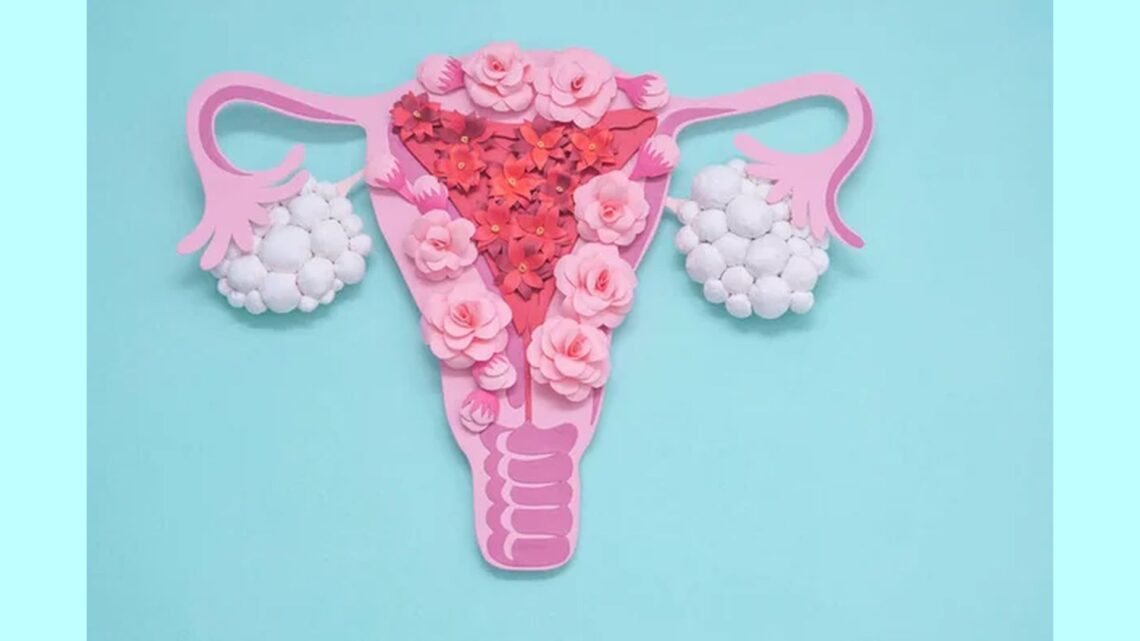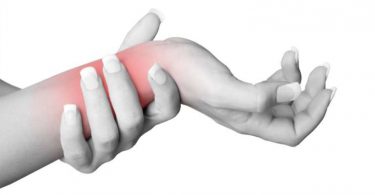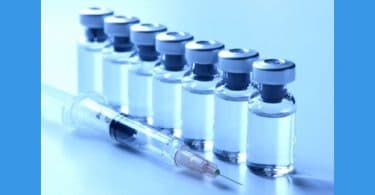Introduction:
Benign ovarian cysts (Homeopathy for Ovarian Cyst) are usually not dangerous and they often go away by themselves. But in pregnancy, they can cause a miscarriage or premature labor. The cysts can grow large and rupture or twist on themselves (ovarian torsion). There is a higher risk of these complications in women with polycystic ovary syndrome (PCOS). In this patient, considering her personal medical history, age and the size of the cyst, the probability of complications was quite high. Size of the cyst is usually considered dangerous if it exceeds 6 cm and many times surgery is performed, which together with anesthesia, represents another risk for both the mother and the baby. As homeopathy can be effective in treatment of these benign cysts, it is often able to prevent the surgery and save the baby.
The case:
A 38 year-old woman came to my office and reported having a cyst on her right ovary. She was 7 weeks pregnant after artificial insemination. She was born without a left ovary. She was not taking any medication at the moment. All this initial information together suggested that this woman was definitely having a “weak spot” in her hormonal system, so I decided to investigate this area more. I asked her to say more about the cysts, her menstrual cycle and medical history.
Thy cyst was 14 cm in diameter. She had stitching pains in the area of the right ovary (3) and the pains were worse from sneezing (2) or coughing (2), but these two modalities occurred only when she was lying outstretched. The pain was also worse from walking (2). She’d had these large cysts for the past 10 years but had already been diagnosed with polycystic ovaries a long time before. The cysts usually ruptured and went away by themselves but she underwent a surgery for it once.
She also had pains in her breasts 1-2 weeks before menses (2) for the past 3-4 years. She always had problems with her menses. In the last few years her menses was late (3) and painful (3). In the past, she used to have menses only about once a year (for about 8 years). About 10-12 years ago she had a period of very frequent herpes sores on lips (4) but the sores went away.
She also reported occasional pains in the face (in the area of maxillary sinuses) from drafts of air (2). She had sinusitis two years ago with a fever of 38°C. She does not tend to have fevers otherwise and she only has mild acute colds about twice a year. About 10 years ago she used to have high fevers, but not frequently.
She did not complain about any other problems, so at this point, I started asking questions to confirm or exclude possible remedies that were coming to my mind on the basis of the aforementioned information.
Note: I only state questions that revealed some pathological symptoms, because I do not write down healthy characteristics in my reports. So in reality, I ask many more questions but I only note down what I find pathological.
How is your thirst? I have been thirstless (3) for all my life.
Tolerance of heat or cold? In general, I am rather chilly (1) and like heat (2). However, since my pregnancy started, I have been less chilly then before (2) and do not like heat so much.
Any food preferences or aversions (esp. lately)? Aversion to smoked food (3), esp. smoked meat, sausages, etc. (3) – I used to vomit from it as a child. Aversion to fatty meat (3), meat in general (2), but I do not mind oils or butter. I like cheese very much (3), esp. goat cheese (3), chocolate (2) and coffee (2).
For all your life? Yes, it has been the same.
How do you like motion? A lot.(3) I am a very active person in general and constantly have to do something.(3) I constantly keep myself busy.(3)
At what time do you have the best energy? When do you like to work for example? Morning is the best and then it goes down towards evening. I am not a night type. I do not like to work in the evening.
Any diarrhea or constipation? Now I am a bit constipated (1) in pregnancy, but for the last 10-15 years, my problem has been rather diarrhea (2). I also have diarrhea before menses (3).
Any swelling, edemas anywhere in the body? Yes. When I go running, my legs get swollen (2) and some time ago, when I used to drink a lot of mineral water, I regularly had swelling in my face (3), especially around eyes (3) and it used to be worse before menses (3) so I stopped drinking the mineral water and it went away.
Note: numbers behind the symptoms mean their intensity (underlining)
Analysis of the case:
It is interesting to notice that this lady’s organism lost the ability to produce high fever about 10 years ago and at the same time, the large cysts started occurring. As my teacher, Prof. George Vithoulkas says, if there is a decline of the state of health in the organism, it always happens for some reason. It is not a coincidence. The fact that this organism cannot produce high fevers anymore (and in the past it managed to), is not favorable and it means that a significant decline in the overall vitality of the organism took place about 10 years ago. Prof. Vithoulkas describes this phenomenon in detail in the book Levels of Health.[1] Unfortunately, we do not have enough information to be able to determine the cause, as she did not remember details from that period. It may have been, for example, some kind of suppressive treatment of the herpes sores, overwork, or any kind of psychological stress to which she was sensitive.
As it is not possible to cover all symptoms of a patient’s life in most homeopathic cases, we use the idea of layers of remedies[2] where we suppose that a person needs several different remedies in a correct sequence in order to achieve the maximum possible degree of health. We always try to determine the so called uppermost layer, in other words, the symptomatology that we should focus on and that has to be treated at the moment. Although the uppermost layer is usually (but not always) created by the most recent symptoms, in most cases, we do not use all current symptoms to find the remedy and we have to select only the most characteristic symptoms of the case. It would be great if were always able to find a remedy that covers all current symptoms, or even better, all symptoms of a person’s life. Homeopathy would be very easy then, but unfortunately, this is usually not possible.
The most characteristic symptoms of a case (the symptoms which represent the unique way that the organism is dealing with the imbalance or how he reacts to a negative stimulus) comprise the so called strange, rare and peculiar symptoms[3] and intense symptoms.
From all the available symptoms of the case, I chose these to be the most characteristic:
Peculiar symptoms:
- stitching pain in the right ovary (3)
- pains in the ovary worse from sneezing and coughing when lying outstretched (2)
- pains in the ovary worse from walking (2)
- edematous swelling of legs after running (2)
- edematous swelling of face and around eyes after drinking mineral water (3),
- worse before menses (3)
Intense symptoms:
- cyst on the right ovary (3)
- pains in breasts before menses (2)
- thirstless (3)
- desire for motion, keeps herself busy (3)
- pain in maxillary sinuses from draft (2)
- diarrhea before menses (3)
I did not use the menstrual irregularities because they are explicable by the pathology and very usual in PCOS. Constipation in pregnancy is also very common. The herpes sores cannot be used because she has not had them for the last 10 years. The edematous swelling of face is also not currently present, but because it went away after she had stopped drinking the mineral water and it is very peculiar, I used it. The patient has been lately less chilly than before, but since it is not very intense, we can keep it as information that may be useful for differential diagnosis.
Relevant rubrics: (using The Essential Synthesis repertory)[4]
FEMALE GENITALIA/SEX – PAIN – Ovaries – stinging
FEMALE GENITALIA/SEX – PAIN – Ovaries – stitching pain
FEMALE GENITALIA/SEX – PAIN – Ovaries – walking – agg.
EXTREMITIES – SWELLING – Lower limbs – dropsical
FACE – SWELLING – edematous
FACE – SWELLING – Eyes – Around
FACE – SWELLING – menses – before – agg.
FEMALE GENITALIA/SEX – TUMORS – Ovaries – cysts
FEMALE GENITALIA/SEX – TUMORS – Ovaries – cysts – right side
CHEST – PAIN – Mammae – menses – before – agg.
STOMACH – THIRSTLESS
FACE – PAIN – air agg.; draft of
MIND – ACTIVITY – desires activity
RECTUM – DIARRHEA – menses – before – agg.
Differential diagnosis of the most probable remedies:
Apis mellifica: It is one of the main remedies for ovarian cysts, especially right sided (although it can cure left sided ones too if the symptoms agree).[5] The cysts of any type, stitching (stinging) pains, lack of thirst, edematous swellings (especially lower extremities and around eyes), diarrhea and busy nature with restlessness are keynotes of this remedy. It is generally a right sided remedy. We can find it in the second degree in the rubric for ovarian pain worse from walking and in the first degree in the rubric for diarrhea before menses. Swelling and edemas are a part of the essence1 of this remedy.
Palladium metallicum: This remedy also has right ovarian complaints and cysts as keynotes. Cysts and tumors of Palladium tend to be very large which also corresponds with this case. Moreover, it covers two modalities – the ovarian pains worse from coughing and jar (if we suppose that walking could produce jarring). The remedy covers pains in breasts as well.
Belladonna: Right-sidedness, lack of thirst and aggravation from jar are keynotes of this remedy and it is also known for affections of right ovary. The pains in the ovaries can be stitching[6], although this remedy is mainly known for throbbing pains. It covers inflammation and complaints of sinuses and it is worse from cold draft in general. It covers pains in mammae.
Podophyllum: It is another remedy which has right sided ovarian complaints as a keynote, but especially pains or inflammations. It covers cysts as well, but it is not a keynote. We can find aggravation of ovarian pains from walking in Hering’s Guiding Symptoms of Our Materia Medica[7], but the remedy cannot be confirmed otherwise.
Lycopodium: Right-sidedness is the only keynote of this remedy in the case, but it is also known for right sided ovarian complaints including cysts and the pains can be stitching. Edematous swelling of face and limbs can be confirmed in the materia medica, but is not a keynote.
Arsenicum album: It has edemas, restlessness and diarrheas as keynotes. It covers tumors of ovaries but rather of a malignant character. It cannot be confirmed otherwise.
Kali bromatum is a restless remedy which covers cysts in the ovaries but cannot be confirmed otherwise.
Bovista lycopendron can have ovarian cysts, is restless and has diarrhea before menses as a keynote.
Pulsatilla has thirstlessness, hormonal affections and aversion to fatty meat as keynotes but cannot be confirmed otherwise.
Choice of the remedy:
From all the remedies explored, Apis, Palladium and Belladonna seem to be the most similar to the case. There is no strong contraindication in any of these remedies so we have to decide according to which keynotes or possibly essence each of them covers.
It is obvious that Apis mellifica best covers the totality, but what is more important, it covers the most characteristic symptoms of the case as keynotes. In Apis, we can also confirm a part of its essence. It is truly one of the most important remedies for cysts. Prof. Vithoulkas writes in his Materia Medica Viva: “Special attention should be paid to the ability of Apis to develop all kinds of cysts, which are usually enormous in size and develop with extreme rapidity.”5 The fact that the patient developed edematous swelling of her face after having drunk too much mineral water could suggests that she may be having some problems with her kidneys, which is another strong feature of Apis. It is also interesting to find the symptom “In cardiac dropsy the feet swell after walking,…“ in H.C. Clarke’s Dictionary of Practical Materia Medica.[8]
Palladium covers quite well the local complaints with modalities but it does not cover the edemas and desire for activity and even in the local complaints, none of its modalities are keynotes, whereas the stinging type of pains is a keynote of Apis. Unlike Apis, Belladonna covers the pains in sinuses but this is not the main complaint we should focus on at the moment. This remedy does not have cysts as a keynote and covers fewer keynotes in the case than Apis. The only seeming problem with Apis may be the fact that the patient likes heat and is chilly, but it is not very strong and when she said that since she was pregnant she has felt less chilly, I did not consider it a contraindication. There has been a change more towards the warm side (although she still may be quite chilly) and it is a change of a general symptom. It is always very important when a general changes. Of course, it can be explicable by hormonal changes in pregnancy, but nevertheless, chilliness was her general tendency for most of her life, which could mean that it belongs to a deeper layer and will be covered by some of the remedies that follow (like Sepia, for example, if her herpes sores come back). So this symptom most probably does not belong to the uppermost layer. Symptoms like this can be very tricky but this is exactly the situation I described in the analysis of the case where I wrote how important it is to determine the uppermost layer of symptoms. Moreover, Apis can also be chilly sometimes. The remedy Apis mellifica can be prescribed on the basis of the totality, keynotes and essence.
Prescription: Apis mellifica 30C single dose
Outcome of the treatment:
The patient called me 10 days after the remedy and said that the cyst was the same size but she had felt some unusual pains and feelings in the ovary during the first few days after the remedy. I told her to wait, and one month later she called me to report that her cyst was almost gone. An ultrasound examination showed significant decrease in the size of the cyst. A check up a month later showed no signs of the cyst and the finding was completely physiological. She also reported feeling better in general and energy wise. During pregnancy, she did not have any other serious problems and she delivered a healthy child. She has not needed any other remedy so far. The follow up now is one year.
Discussion:
In the materia medica, we can read that Apis should not be given in pregnancy, especially in early months, because it may cause an abortion. According to the laws of classical homeopathy, if the remedy is correct and dosed properly, it cannot cause such a situation. A correct remedy only stimulates the organism to function better as a whole and to heal itself by its own means. The organism itself never voluntarily produces a situation that would be more dangerous than the current state. The danger may come if we give an incorrect remedy which is only partially similar to the case, and especially, if we overdose the patient with it and we basically cause a proving of the remedy. The similar situation is with Silicea and suppuration (as Kent warns about the deposits in lungs in tubercular patients). Once the remedy is truly indicated, such a thing should not occur.
[1] VITHOULKAS, G., WOENSEL, E. The Levels of Health: The Second Volume of The Science of Homeopathy. Athens, Greece: International Academy of Classical Homeopathy, Center of Homeopathic Medicine, S.A., 2010. ISBN: 978-9-6087-4294-9
[2] VITHOULKAS, G. The Science of Homeopathy. Athens, Greece: International Academy of Classical Homeopathy, Center of Homeopathic Medicine, S.A., 2009. ISBN: 978-960-87429-3-2
[3] HAHNEMANN, S. Organon of Medicine, Sixth edition. New Delhi: B. Jain Publishers, 2008. ISBN 978-81-319-0223-3, §153, page 158
[4] SCHROYENS, F. The Essential Synthesis 9.2E. London: Homeopathic Book Publishers, 2007. ISBN: 978-0-9557151-0-5
[5] VITHOULKAS, G. Materia medica Viva. Volume 2. London: Homeopathic Book Publishers, 1995. ISBN 0-9522744-77, p. 430
[6] HERING, C. Guiding Symptoms of Our Materia Medica. Belladonna [online]. https://homeopathybooks.in/guiding-symptoms-of-our-materia-medica/belladonna-5/
[7] HERING, C. Guiding Symptoms of Our Materia Medica. Podophyllum Peltatum [online]. https://homeopathybooks.in/guiding-symptoms-of-our-materia-medica/podophyllum-peltatum/
[8] CLARKE, J.H., Dictionary of Practical Materia Medica. Apis [online]. https://homeopathybooks.in/dictionary-of-practical-materia-medica-by-j-h-clarke/apis-2/






hi,
very nice presentation with an excellent result!! Thank you!
In what potency was given the remedy? Was it a single dose?
thank you!
Kind regards!
Hi, thank you. The potency was 30C and it was a single dose.
Regards
Dear Petr, you reached very advanced level of knowledge in very short time and I am proud of you my friend. Keep it up! Petr
Dear Petr, you reached an advanced level of knowledge in very short time. I am proud of you to be one of people I am working with. Keep it up my friend!
Petr
Thanks man. I appreciate that a lot. It’s a pleasure to work with you too. Petr
Dear Petr,
unlike some other cases here in hpathy, this is a case and an analysis that convinces me with all the conclusions, the choice of the rubrics and the discussion staying on solid ground. Thanks to Geoerge Vithoulkas having brought us on this way. Alonnissos 1987 was the priming!
Heinrich
Thank you Heinrich.
Regards
Petr
thanks a lot
ovarian cysts, metritis enlarged uterus, following pregnancy, apis
Dear Petr,
Well done. Nicely presented case.
Congratulations.
Warm wishes
Syamala
Indian from Singapore in Alonissos
Thank you Syamala. I appreciate that.
Regards
Petr
Myron Adoms says his experience uterus ovary displacement creates pelvic pressure affecting circulation and advice is study Lil Tig Helonias Sepia Caulo.